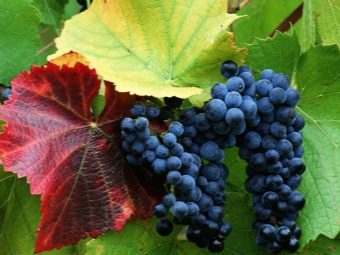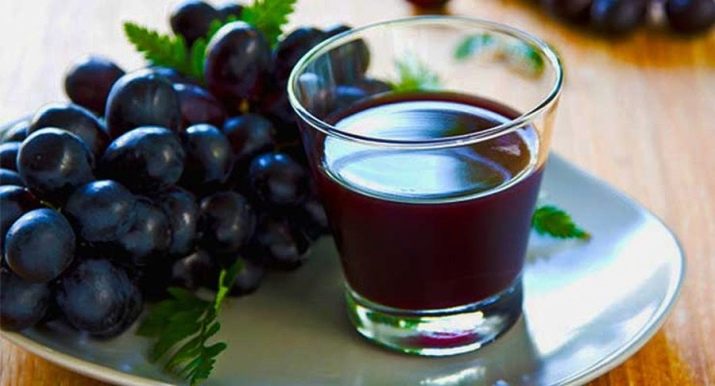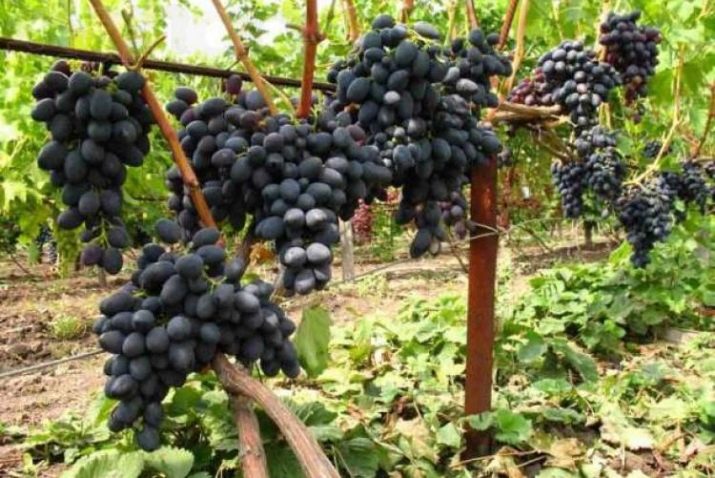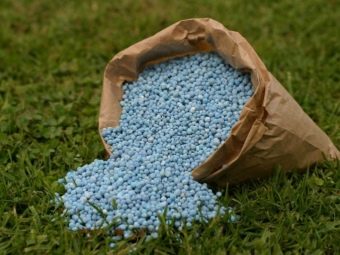Black grapes "Kishmish Potapenko": characteristics and cultivation
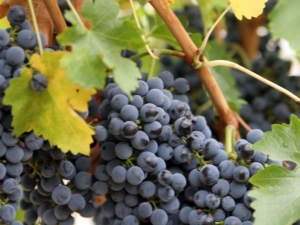
Berries varieties "Kishmish" known growers from ancient times. The Turkic name came from Central Asia, where grapes grow in natural conditions.The Kishmish grape varieties group is characterized by a small size of berries without seeds and a high sugar content. Thanks to these properties, raisins are produced from such grapes on a large scale, they make wine, and they are also sold as one of the most popular sweet delicacies of early autumn.
Characteristic
The grape variety Kishmish Black Potapenko was bred by Russian breeders of the All-Russian Research Institute of Viticulture and Winemaking. Ya. I. Potapenko "in the Rostov region. Based on the maternal grape varieties Talisman and Glinor. When breeding, the hybrid has not lost its taste and has acquired resistance to a cool climate. The variety was successfully tested in the southern regions of Belarus, after which it was widely distributed in more northern regions.
"Kishmish black Potapenko" refers to the early ripening varieties. Crop ripening begins from the second decade of August and lasts until late autumn. Therefore, over the summer, the berries have time to ripen even in the regions of Siberia. The vine forms a brush with small berries of blue-black color, covered with a bloom of natural wax.
Due to the thick skin and dense arrangement on the brush, the grapes tolerate transportation and storage. A picturesque view of grape brushes will be a wonderful decoration of both the garden plot and the festive table.
This grape variety belongs to the table. It has fleshy juicy berries weighing from 2 to 6 g and a cone-shaped bunch weighing 500-700 g. The color of berries can vary from dark blue to black. The taste of berries - sweet, with a sugar content of 16-25%. Productivity reaches 100-200 centners per hectare. Based on the description of the variety and reviews of gardeners, winegrowers, it is ideal not only for fresh consumption, but also for making wine and juice at home, as it has a slight taste of black currant.
Advantages and disadvantages
The advantages of growing the Kishmish black Potapenko variety are enough.
- The main advantage is its frost resistance. Under the dense cover of snow grapes can withstand a temperature drop to -20 ° C.
- The variety is less susceptible to fungal diseases characteristic of grapes. In cool climates and conditions of high humidity grapes are resistant to gray rot, which destroys the heat-loving plants.
- Dense clusters keep their shape well, keep their presentation for a long time during transportation and storage.
- It has no special requirements for the soil, so it can grow on almost any soil.
Significant disadvantages of the hybrid are not identified, but the disadvantages include some features of care;
- "Kishmish black Potapenko" requires certain watering rules, the violation of which can lead to the death of the plant;
- in the northern regions, it is necessary to lay the vines on the ground and insulate with covering material for the winter.
Benefits and contraindications
Like any grape, Kishmish black Potapenko is a strong antioxidant, contains a complex of vitamins A, C, E and group B, rich in trace elements calcium, iron, phosphorus, iodine and magnesium. Due to this, the grapes have a beneficial effect on the immune system of the body, improves metabolism, has anti-edema effect. In cosmetology, it is used as an agent that has an antioxidant effect, slowing down aging.
It is recommended for people with increased nervous excitability and in stressful conditions. For young children is a natural substitute for sweets and sweets.
Contraindicated in people suffering from diabetes and heart failure. It is also worth minimizing the consumption of sweet varieties "Kishmish" with diets and the tendency to obesity.
Growing up
When choosing seedlings varieties "Kishmish black Potapenko" should pay attention to the root system of the plant. It should be healthy looking, have a green-brown color on the cut. The grapes are planted in the spring when the soil is warm enough.The plot is better to choose sunny from the south or south-west side, so that the buildings do not block the vineyard throughout the day. This variety is unpretentious to the composition of the soil, but standard mineral fertilizers will not be superfluous.
When planting for seedlings prepare pits with a diameter of 60-70 cm in depth and width, after planting the soil is firmly tamped and poured with water. The first watering requires up to 15 liters per 1 square. m, so that the earth is deeply absorbed water, and the root system has taken root. After the water dries, the soil is slightly loosened and mulched. As mulch, you can use straw or rotted sawdust.
The Kishmish black Potapenko grape bushes are distinguished by their tallness, ripening along the entire length of the vine, which reaches 5 meters in height. The brushes are formed on 80% of the stem of the plant. Grapes successfully propagated by cuttings. The first crop ripens in mid-August, at 115-120 days from the moment of bud break.
This variety does not require increased maintenance and easily adapts to a small number of sunny days. Vine resistant to frost, good winters under a thick layer of snow. It is recommended to wrap grapes with warming material in the fall or lay coniferous branches.
Watering
The basic rule for the care of grapes "Kishmish black Potapenko" is the correct system of watering. From the systematics of irrigation depends on the quality of the crop and the health of seedlings. Excessive moisture or lack of water can lead to the death of not only the crop, but the entire plant.
The first watering is carried out in the spring, as soon as the thermometer rises above 0 °. as in the case of seedlings, water consumption will be 15 liters per 1 square. The second watering follows immediately after cutting off the shoots of the vine, the amount of water is doubled - 30 liters per square meter. m. The third and fourth watering - before the flowering of the grapes and after. Calculation of water - 35-40 liters per 1 square. During active growth and fruiting, it is necessary to ensure that the soil does not dry out.
How to care for grapes, see the next video.


